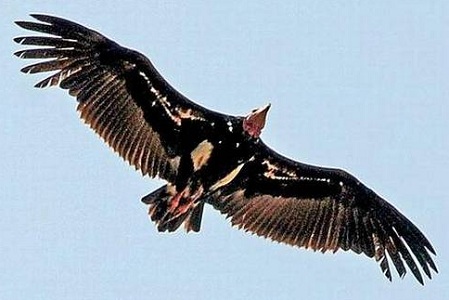
Vultures find new nesting sites in Ebbanad, Kodanad slopes
‘The reasons for the vultures abandoning their traditional nesting grounds still needs to be studied’
While researchers and conservationists continue to study the reasons for two species of vultures found in the Nilgiris abandoning one of their prime nesting grounds in the Sigur plateau since 2016, researchers have seen an increase in nesting activity along the slopes of Ebbanad and Kodanad, indicating that the birds could have established new nesting colonies since being forced to leave.
B. Ramakrishnan, an assistant professor from the department of wildlife biology, Government Arts College, Udhagamandalam, who has been studying the nesting habits of the four species found here – the white rumped vulture, red headed or Asian king vulture, long-billed vulture and the Egyptian vulture
since 2011, said that he had first noticed a decline in nesting by the white rumped and long-billed vultures in 2014, and stated that by 2016, the entire area had been abandoned.
“As Siriyur was among five nesting grounds in the Sigur plateau which we had discovered and were studying, it was of course a matter of concern,” said Mr. Ramakrishnan, stating that the reasons for the vultures abandoning their traditional nesting grounds still needs to be studied. “It's easy to try and draw a conclusion that they moved away due to human disturbance, but there could be a whole lot of factors which need to be thoroughly understood, so that we can reach a conclusion as to why the colony was abandoned,” he added.
S. Bharathidasan, Secretary of Arulagam, a conservation group working towards the protection of vultures, said that from his own observation, it seemed likely that the birds had abandoned the nesting site in Siriyur, and had instead begun colonising the slopes of Ebbanad and Kodanad, possibly because there was lesser human interference in these regions.
“It is difficult to say with certainty whether that is the case, but it does seem likely,” said Mr. Bharathidasan, who said that both white-rumped as well as long-billed vultures are known to nest in Ebbanad, while long-billed vultures are known to nest primarily in Kodanad.
Though the Egyptian vulture is known to nest predominantly in parts of Karnataka, the search for the nesting sites of the incredibly rare red-headed vulture or the Asian king vulture, of which less than 20 individuals are known to be found in the Nilgiris, continues.
Mr. Ramakrishnan said that though they have heard rumours of nesting sites in the Sigur plateau, he himself has not personally seen any thus far. Though critically endangered, the population of red-headed vultures has stabilised over the last few years in the Sigur plateau.

